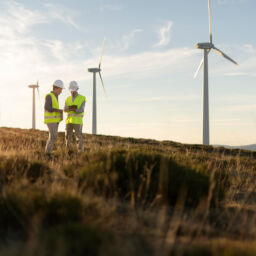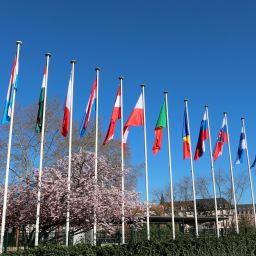
European energy prices continue to surge as Russia tightens its hold further on the region’s supplies, endangering the economy and critical markets further. As supplies through a critical pipeline have decreased, the price of natural gas has risen by up to 14 percent and is now more than ten times the normal level for this time of year.
The spike is debilitating Europe’s industrial output, driving up household expenses, and causing inflation to reach its highest level in decades. It has also had a ripple effect on the power market, with German futures prices reaching an all-time high.
The energy crisis reached a new level this summer when Moscow began to gradually reduce flows via the Nord Stream pipeline to Germany, blaming turbine problems connected to sanctions. European officials have accused Russia of weaponizing supplies, even as the country has been subjected to harsh restrictions since its conflict with Ukraine began in late February.
“Gas is now part of Russia’s foreign policy and possibly its military strategy,” said Klaus Mueller, the president of the German federal network agency.
According to German grid operators, deliveries through Nord Stream dropped to 20 percent of capacity as of Wednesday. The downturn is already manifesting in reduced deliveries to purchasers, with Italy’s Eni SpA announcing that its shipments from Russia on Wednesday will be approximately 21 percent fewer than in recent days. Kremlin officials claim in secret that the cuts are intended to exert pressure on the West about sanctions.
Gazprom PJSC has forewarned of the impending power disruptions, stating that a turbine needed to be shut down for repair. A second comparable piece of equipment that was stranded in Canada after undergoing repairs was returning to Russia, but has not yet been put back into action. Dmitry Peskov, a spokesman for the Kremlin, stated that Gazprom is supplying as much natural gas as possible. These fines prevent the prompt performance of technical maintenance, replacement of spare parts, major repairs, and other routine maintenance on pumping-related equipment.
He noted that Gazprom cannot guarantee flows if imported equipment cannot be repaired due to European restrictions. The pipeline was operating at 40 percent capacity prior to the most recent curtailment. Vitaly Markelov, the deputy chief executive officer of Gazprom, stated that only one turbine is putting gas into the Nord Stream pipeline, when five should be operating. Currently out-of-service turbines cannot be repaired due to unsolved issues, he said on Russian state television.
As a second bullish indicator, Russian gas exports via Ukraine, the only other major pipeline route to Europe, could decline from their already low levels. Thursday’s orders for Russian natural gas supplies through the Sudzha transit point are 76% lower than the previous day, according to preliminary data issued by Ukraine’s grid. These nominations are still subject to modification and updating.
Europe is preparing for more difficult times ahead, as the continent continues to rely heavily on Russian gas despite obtaining other supplies. According to Bloomberg Intelligence, the EU’s goal to refill 85 percent of storage by winter is contingent on a 15 percent reduction in demand. In spite of assistance from the LNG market, analysts Patricio Alvarez and Will Hares warned that supply is expected to decline.
The European benchmark, Dutch front-month futures, climbed 2.7% to close at 205.23 euros per megawatt-hour. After earlier reaching a record high of 390 euros per megawatt-hour, the German power futures index declined by 1.3%. French electricity for the following year traded around a record high. Anders Opedal, CEO of Equinor ASA, stated, “It is quite difficult to make forecasts about this winter, but it will be a challenging winter for Europe, that much is certain.” He stated that the Norwegian energy giant, which has been producing gas at full capacity to compensate for at least a portion of lost Russian volumes, is collaborating with the government and industry to see what else can be done to increase supply.
The shortage of gas and the energy crisis in general are having a ripple effect throughout the entire world, and it poses a risk of both recession and an additional wave of inflation. But thankfully, there is still hope for Germany and all of Europe because the time and effort put in by a large number of highly motivated and creative energy specialists and scientists from all over the world to make the renewable energy future a reality will not go unnoticed. People like those working at The Neutrino Energy Group, who have been putting in a lot of effort to improve their neutrinovoltaic technology in order to support the energy that is now provided by wind farms, solar arrays, and other sustainable energy projects. a one-of-a-kind supply of energy that, in the years to come, will fundamentally alter the way in which we think about renewable sources of power.
Even though the sun and the wind are all free sources of energy in and of themselves, the cost of collecting, processing, and storing solar and wind energy may be rather significant in the beginning. During the process of installation and initial setup, you will be required to pay for various components, such as solar panels, wind turbines, inverters, batteries, and wiring. Furthermore, they take up a significant amount of space, and the process by which they generate electricity is profoundly influenced by the elements of the surrounding environment. and that is where Neutrino Energy comes into play.
Neutrino Energy ‘s potential is limitless; for instance, neutrinovoltaic cells do not encounter the same hurdles as other renewable energy sources in terms of efficiency and reliability. Continuous neutrino energy production is possible even when the sun isn’t shining and the wind isn’t blowing. This is a huge advantage, since it allows the technology to produce power continuously, 24/7, throughout the whole year. Due to the fact that neutrinos pass through almost all man-made and natural materials with little resistance, neutrinovoltaic devices may be deployed both inside and outdoors, as well as underwater. Neutrinos continue to bombard the Earth independent of climatic circumstances, making neutrinovoltaic technology humanity’s first fully sustainable energy innovation.
And here is another cool fact about neutrino energy: it’s an energy source that doesn’t require energy storage systems. Neutrinovoltaic technology offers the potential to alleviate the burden of renewable energy sources that rely on storage, even on a small scale. Even if neutrino energy satisfies just 10 percent of a renewable power grid’s entire energy demands, it still eliminates the need to store 10 percent of that system’s electricity in batteries. Decentralization is the essence of neutronovoltaic technology’s attractiveness. Its Cells can be integrated directly into mobile phones, appliances, automobiles, and other energy-consuming equipment, therefore making it unnecessary to store or squander power by transporting it across the city.
However, the energy sector isn’t the only one profiting from neutrinos’ limitless potential; the electro-mobility business also benefits greatly from them. While the bulk of electric vehicle users still get their power from a wall outlet, anything powered by neutrinovltaic technology receives its power from the environment. No one has been interested in this kind of energy until now since the internal combustion engine was not intended for it, but for an electric automobile, the ambient energy is like a constant fuel pump, an unlimited cosmic ray surge from the sun, light, neutrinos, and other invisible radiation.
The Car Pi project is a resounding success thanks to the respected Neutrino Energy Group in Berlin, Germany. The company is working hard on developing, constructing, and manufacturing the Car Pi into a one-of-a-kind car that draws its energy simply from the environment—completely independent of the “dishonest” electricity that comes from the combustion of fossil fuels. Making this invention one of the most ambitious tasks ever undertaken by mankind, and it is getting closer to becoming a reality.
This remarkable vehicle generates its own energy by utilizing neutrinos and other non-visible radiations, making it the world’s first automobile that does not require recharging at a standard charging station, instead pulling what it requires to circulate eternally, whether driving or simply sitting motionless. Depending on the situation, just leaving the car outside for an hour can give it up to 100 kilometres of range.
Electric cars are not the only ones that will benefit thanks to neutrinos and other non-visible radiations. After the success of the Car Pi project, the neutrino energy group will move on to the Nautic Pi project as their next step. For the purpose of adapting the technology to electric yachts and boats, more than one thousand engineers will be hired, and more than one billion dollars will be invested. This will make it possible for these vessels to sail the oceans without using even a single drop of fossil fuel, nor will they be required to store energy in batteries.
Neutrino Energy is truly the power of the future, and it is all thanks to the Neutrino Energy Group’s efforts and its impressive neutrinovoltaic technology. Humanity now has a long-awaited and trustworthy solution to the current energy crisis. Due to their hard work, more substantial changes will take place, and hopefully others will follow in their footsteps, and we will live in a better and more environmentally friendly world in the years to come.
















